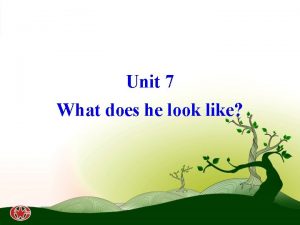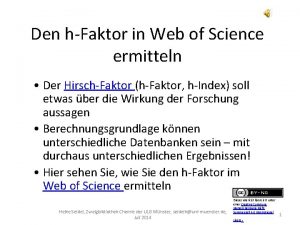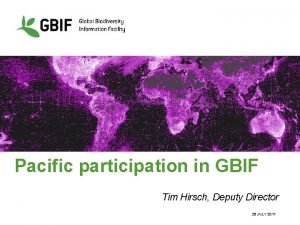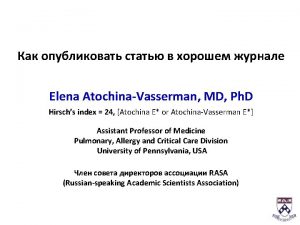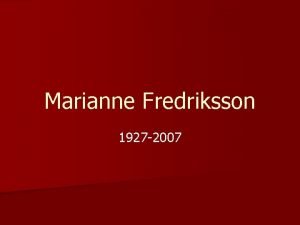Marianne Hirschs The Generation of Postmemory Hirsch looks







- Slides: 7

Marianne Hirsch’s The Generation of Postmemory Hirsch looks upon the aspects of postmemory, the memories and recollections from the next generations, in particular Hirsch looks at using oral recollections and the introduction of photography as an intergrading part of postmemory recollections. Uses different Practitioners and quotations Eve Hoffman in regards to postmemory in which it describes relationship of the second generation to powerful/traumatic, experiences, preceded their birth and these experiences transmitted to them so deeply, constitute memories in their own right

Holocaust as a postmemory example reinforce postmemory so strongly, is the Holocaust and how the generation of postmemory relies primarily on photography as the medium of trans-generational transmission of trauma role of the family can be used as a space of transmission, and having these family relations allows this ‘Hinge generation’ to receive knowledge of the events and they can be transmuted into history “sense of living connection” that can be, and still it being, maintained and perpetuated even as the generation of survivors have gone Eva Hoffman regards to, as the “era of memory” in which all aspect, such as intellectual excitement, personal urgency, community and commonalty, play an important part to convey the memories through.

Different aspects of memory transfers Raul Hilberg who defers to storytelling as a skill historians need to learn if they are to be able to tell the difficult history for the destruction of the Jews, recalling a dichotomy between history and memory (for him, embodied by poetry and narrative) that has had a shaping effect. Poetry is now only one of many supplemental genres and institutions of transmission. Oral history archives, photography and performance, culture of memorials, and the new museology and these types of testaments are all vital to embodying the knowledge they represent. publishing artworks, films, novels, and memoirs, or hybrid “postmemoirs” “Daddy’s War, ” “War Story, ” scholarly essays and collections, “Children of the Holocaust, ” “Memorial Candles, ”

Photography as a form of memory Photography as a medium of postmemory clarifies the connection between familial and affiliate postmemory and the mechanisms by which public archives and institutions have been able both to re-embody and to re-individualize “cultural/archival” memory. Hirsch looks at how crucial element in conception of postmemory as it relates to the Holocaust in particular because of the vast number of photographic images meticulously taken and how the photography offers an access to the event itself, making a powerful medium for the transmission of events. Enable us, in the present, not only to see and to touch that past but also to try to reanimate it by undoing the finality of the photographic “take. ” C. S. Peirce’s defines photographic images as more than purely indexical or contiguous to the object in front of the lens: they are also iconic, exhibiting a mimetic similarity to that object. Holocaust photographs are the fragmentary remnants that shape the cultural work of postmemory

Communicative and Cultural memory Hirsch also reflects upon Jan Assmann’s work Das Kulturelle Gedächtnis, in which Jan Assmann distinguishes a collective remembrance, “communicative” memory and “cultural” memory: Communicative memory – biographical, factual, located within a generation of contemporaries who witness an event as adults and who can pass on their bodily and affective connection to that event to their descendants. Cultural Memory – memories from the areas, places, presented in buildings, landmarks etc.

Family in relation to memories Hirsch raises the notion of family, indeed the language of family is insightful, and it’s a form of expression that is both more direct and more ruthless than social and public speech. The language of family extended to the language of the body: nonverbal and non -cognitive acts of transfer occur most clearly within a familial space, often in the form of symptoms. Family also refers to the children of those directly affected by collective trauma inherit a horrific, unknown, and unknowable past that their parents were not meant to survive. People living with pain and depression shape children confusion and responsibility, they desire to repair.

images such as ‘The First Maus’ which allow the younger generation to imagine their father’s experience in Auschwitz reinforced with the arrows pointing to “poppa”

